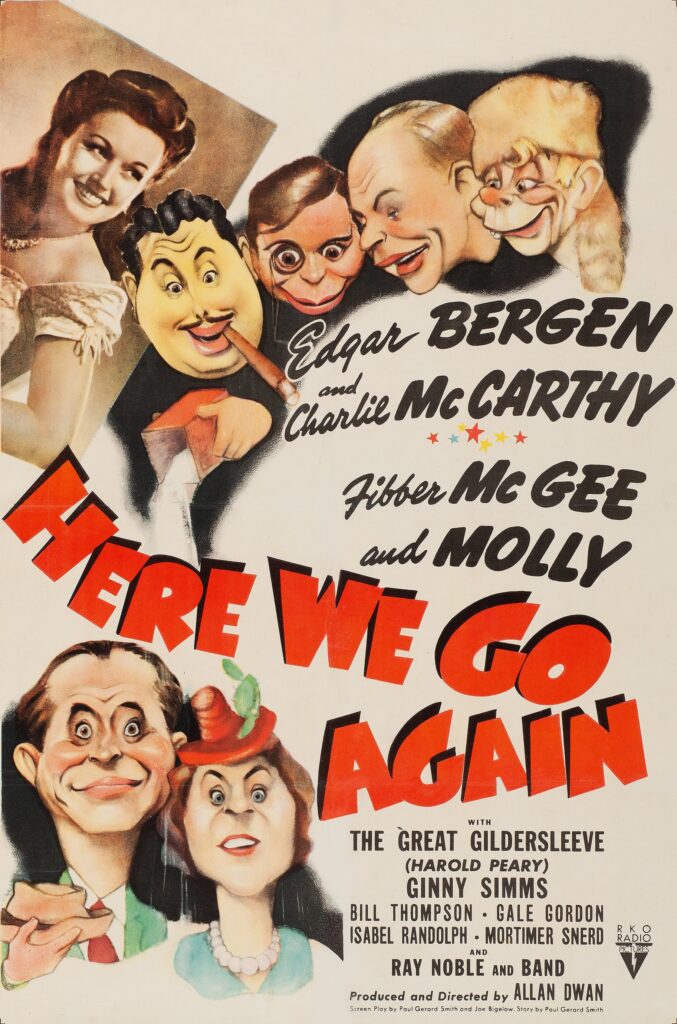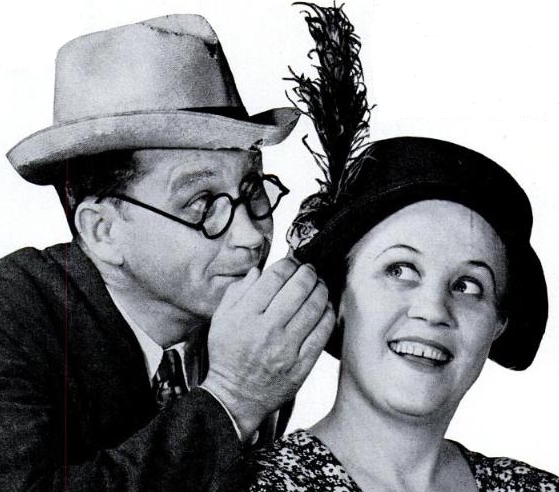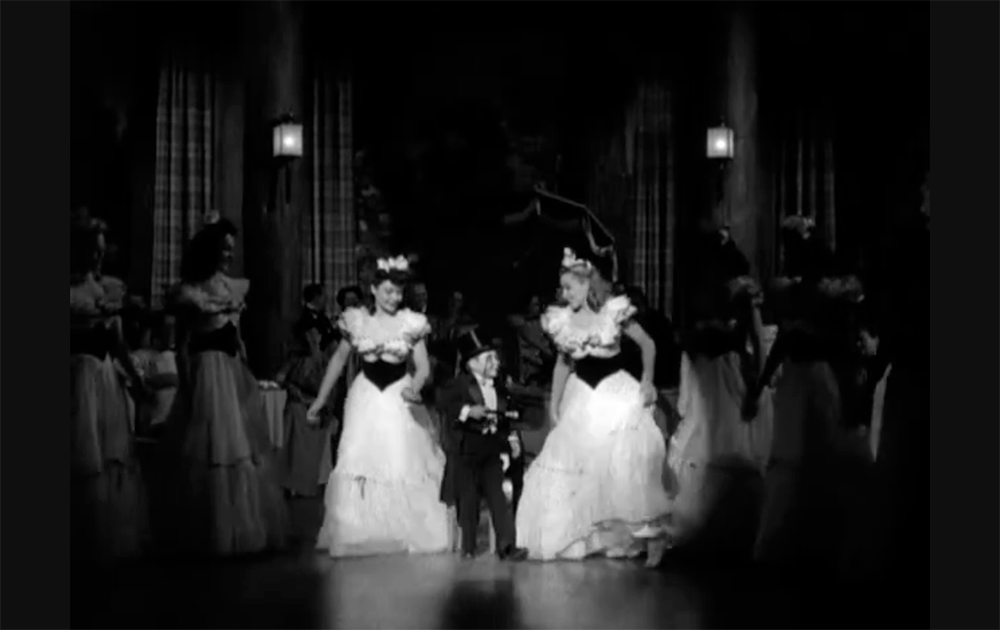
In the 1930’s-40’s, movies needed content and characters but were expensive to make. In comparison, radio was relatively inexpensive, and it generated a lot of great content and memorable characters. A needy Hollywood came a calling.
Out of all the great radio shows of the medium’s early days, one especially stands out for innovation: Fibber Magee and Molly. It debuted in 1935 with real-life married couple Jim and Marian Jordan providing the voices. The show ended on radio in 1959, and there would be a brief television program not featuring the Jordan’s in 1959-60.
Many of the comedic formats still used today in television and film had their beginnings on the show. These include a series of running gags (Magee’s over-stuffed closet) and catchphrases (T’ain’t funny Magee).
At the height of the program’s popularity, there were four Hollywood movies that included or featured the famous couple and their friends: This Way Please (1937), Look Who’s Laughing (1941), Here We Go Again (1942) and Heavenly Days (1944).



The third movie, Here We Go Again (1942), has a plot that relocates the couple from their neighborhood comic exchanges to a more sophisticated environment, a “swanky” – translates to expensive – lodge.
The change of scenery includes some familiar faces, fellow radio entertainer Edgar Bergan and his dummy-companion Charlie McCarthy, plus show regulars Gildersleeve and Mrs. Uppington.

The conversion from radio to film has some built-in problems. The most shocking involves Charlie McCarthy’s brief conversion from a wooden dummy (the kind that must sit on Bergen’s lap) to a real-life person (the kind that dances with showgirls).
